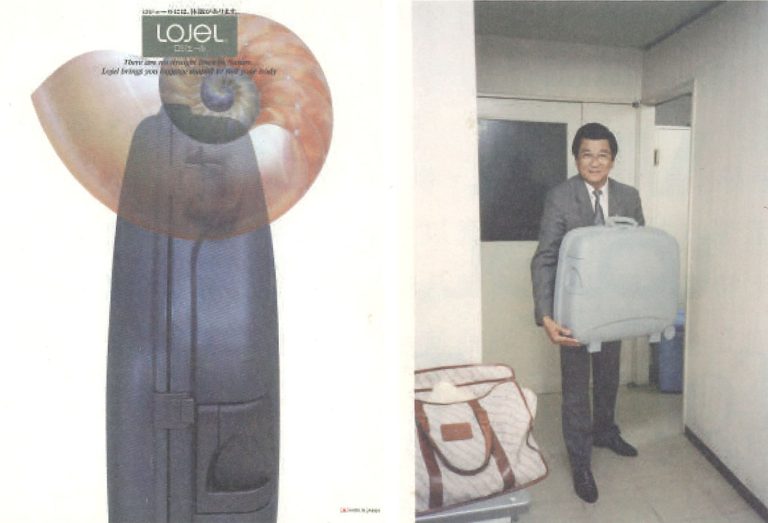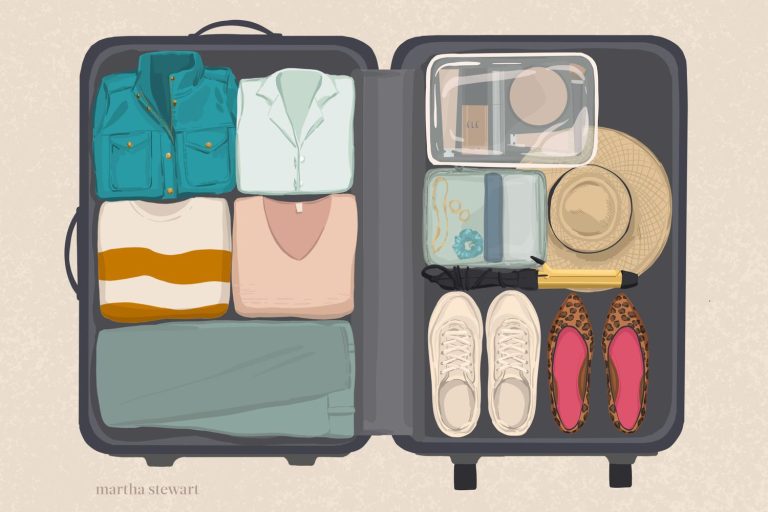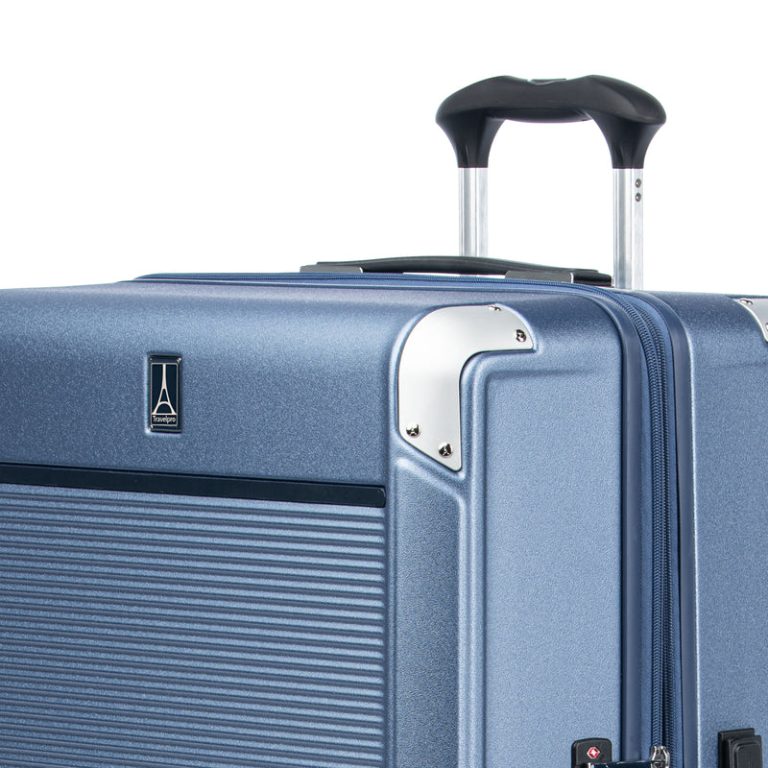Carry on luggage can typically hold up to 40 liters. It is important to check with your airline as each carrier has their own size and weight restrictions for carry on luggage.
Traveling has become a popular hobby for many people around the world and with increasing security measures at airports, knowing the measurements and weight of your luggage is crucial to a hassle-free journey. While the dimensions of carry on bags remain the same, with height, width and depth not exceeding 22 inches, 14 inches and 9 inches respectively, the volume can vary depending on the design of the luggage.
It is recommended to invest in lightweight and durable carry on luggage with easy access compartments and decent storage space for a stress-free travel experience.

Credit: www.cnn.com
Understanding The Carry-On Luggage Limits
Packing for a trip can be a daunting task, especially when it comes to carry-on luggage. Don’t fret just yet! It’s not as challenging as it seems. In this section, we’ll cover the basics of carry-on luggage limits and the different airline requirements.
We’ll also give you tips on how to measure your luggage and pack it efficiently.
Different Airlines And Their Carry-On Luggage Size Restrictions
The carry-on luggage size limit varies from one airline to another, so it’s essential to know your airline’s carry-on luggage restrictions before flying.
- American airlines: 22 x 14 x 9 inches
- Delta air lines: 22 x 14 x 9 inches
- United airlines: 22 x 14 x 9 inches
- Southwest airlines: 24 x 16 x 10 inches
- Jetblue: 22 x 14 x 9 inches
- Spirit airlines: 22 x 18 x 10 inches
- Frontier airlines: 24 x 16 x 10 inches
- Alaska airlines: 22 x 14 x 9 inches
It’s worth noting that airline restrictions are subject to change, so be sure to check for any updates before you travel.
How To Measure Your Luggage To Ensure It Meets The Requirements
Measuring your luggage before packing is crucial to ensure you meet the airline’s carry-on luggage size requirements.
- Take a measuring tape and measure your luggage’s length, width, and height, including the handles and wheels.
- Add up the measurements to determine the overall size of your luggage.
- Compare the overall size with your airline’s carry-on luggage size limit.
- If your luggage is within the allowed size limit, you’re good to go. Otherwise, you’ll need to check it in or choose a smaller bag.
How To Properly Pack Your Carry-On Luggage To Maximize Space
When packing your carry-on luggage, there are a few things you can do to maximize space.
- Use packing cubes to organize your clothes and maximize space.
- Roll your clothes instead of folding them to create more space.
- Pack your shoes at the bottom of your bag to distribute the weight evenly.
- Use the space inside your shoes to pack small items like socks or underwear.
- Use a compression bag to pack bulky items like jackets or coats.
- Place your toiletries in a separate bag to keep them organized and avoid spillage.
By following these tips, you’ll not only maximize space in your carry-on luggage, but you’ll also keep your belongings well organized and make packing a breeze.
Understanding carry-on luggage limits is essential to avoid getting caught out by airline restrictions. By knowing your airline’s restrictions, measuring your luggage, and packing efficiently, you’ll be on your way to stress-free travel.
Determining The Liters Of Your Carry-On Luggage
It is essential to measure the size of your carry-on luggage before travelling to avoid any inconvenience at airport security. However, not all airlines have the same liters allowance for carry-on luggage. Therefore, this article will guide you through calculating your carry-on luggage’s liters size and understand the factors affecting how much you can fit in your luggage.
What Is The Standard Size Of A Carry-On Luggage In Liters?
The standard size for carry-on luggage varies between airlines, ranging from 20 to 40 liters for most domestic and international flights. However, each airline has its own specific restrictions regarding size and weight. It is best to check the airline’s website or contact customer support before your trip.
Generally, most airlines metric size guidelines for carry-on luggage dimensions are within 55 cm x 40 cm x 20 cm [21. 6 inches x 15. 7 inches x 7. 9 inches] range.
Factors Affecting How Much Can Fit In A Carry-On Luggage (Material, Number Of Compartments, Etc.)
Several factors affect how much you can fit in your carry-on luggage, such as the type of material, the number of compartments, and the overall design of your luggage.
- Material: The type of fabric or material used for your carry-on luggage can affect how much you can pack. Soft-sided luggage can often expand and fit more items, while hard-sided luggage has less flexibility and limited capacity.
- Compartments: The more compartments a carry-on luggage has, the easier it is to organize and pack items. However, too many small compartments can limit the number of larger items you can fit.
- Size: The larger the size of your carry-on luggage, the more you can fit. However, it is crucial to stay within the airline’s specific guidelines.
- Shape: The shape of your carry-on luggage can also affect how much you can fit. Luggage with rounded corners can take up less space in an overhead bin than square-shaped luggage.
- Expansion: Some carry-on luggage comes with an expansion feature that can increase its size up to a certain point.
How To Calculate Liters From Inches Or Centimeters
If you have the dimensions of your carry-on luggage in inches or centimeters, you can easily convert it to liters.
- For inches: Length (in) x width (in) x depth (in) / 61 = liters
- For centimeters: Length (cm) x width (cm) x depth (cm) / 1000 = liters
For example, if your luggage is 22 inches x 14 inches x 9 inches, the liters size of your carry-on luggage will be 39. 56 liters.
Tools To Help You Determine The Size Of Your Luggage In Liters
Several tools can help you determine the size of your luggage in liters, such as:
- Luggage scale: A scale that measures weight can help you know if your luggage meets the airline’s requirements.
- Tape measure: Measuring the length, width, and depth of your luggage and then converting to liters using the formula mentioned above.
- Online calculator: Several online calculators allow you to input your luggage size (in inches or centimeters) and provide its liters size.
Understanding how to determine the size of your carry-on luggage in liters can help make your travel experience easier. Keeping in mind the factors affecting its capacity and specific airline guidelines can also ensure that you pack efficiently and avoid additional fees or delays.
Tips For Maximizing The Use Of Your Carry-On Luggage
Carry-on luggage is a great way to save both time and money while traveling, and it can help you avoid the stress of lost baggage. While the size of carry-on luggage can vary by airline, the standard measurements are usually a maximum of 22 x 14 x 9 inches or 56 x 36 x 23 cm.
To get the most out of your carry-on luggage, consider these tips:
How To Pack Efficiently To Maximise Space
- Roll your clothes instead of folding them to save space and reduce wrinkles.
- Use packing cubes to organise your belongings and maximise available space.
- Wear your heaviest shoes and bulkiest clothing on the flight to save space in your luggage.
- Utilize the space inside your shoes by stuffing socks and other small items in them.
Which Items Are Essential For Air Travel And Must Be Carried In A Carry-On Luggage
- Passport, visa, or other necessary travel documentation.
- Electronic devices such as smartphones, laptops, and tablets.
- Medication and toiletries – it’s always a good idea to have a small toiletry bag on hand with items such as toothpaste, deodorant, and hand sanitizer.
- Valuables such as jewelry and cash.
Best Practices For Packing Electronics, Liquids, And Fragile Items
- Pack electronics in your carry-on luggage, as checked luggage can sometimes be mishandled or lost.
- Use padded cases to protect fragile items such as cameras or glasses.
- Liquids should be in a clear, quart-sized bag and should be placed in the top of your carry-on luggage for easy access during security checks.
How To Pack Different Types Of Clothing And Footwear In A Carry-On Luggage
- For clothing, focus on versatile and light-weight items that can be paired in different ways to create multiple outfits.
- Use packing cubes or compression bags to organize clothing, and consider using vacuum seal bags for bulkier items.
- Roll clothing instead of folding, and use the space inside shoes and hats to pack smaller items.
- Choose lightweight footwear that can be easily packed without taking up too much space, such as sneakers or sandals.
Remember to always check the guidelines of the specific airline you will be traveling with to ensure that your carry-on luggage meets their requirements. Happy travels!
Frequently Asked Questions On How Many Liters Is Carry On Luggage
What Is The Maximum Carry-On Luggage Size For Airlines?
The maximum carry-on luggage size for most airlines is 22 x 14 x 9 inches, or 56 x 36 x 23 centimeters.
What Is The Weight Limit For Carry-On Luggage?
Generally, the weight limit for carry-on luggage is 20 to 40 pounds, depending on the airline.
Can I Carry Liquids In My Carry-On Luggage?
Yes, you may carry liquids in your carry-on luggage, but each container must be 3. 4 ounces or less.
Can I Bring My Laptop In My Carry-On Luggage?
Yes, you may bring your laptop in your carry-on luggage. Just make sure to remove it from your bag during security screening.
Conclusion
Based on the factors mentioned above, it is important to know the carry-on luggage size restrictions implemented by the airline you’ll be flying with. The total liters of the carry-on bag permitted vary from airline to airline and can be affected by factors such as class of travel, the number of bags, weight limitations, and route duration.
Therefore, it is always advisable to check with the airline you are traveling with and make sure that your carry-on luggage fits within their regulations. By doing so, you can avoid unanticipated fees or having to go through the unpleasant experience of having to surrender your personal belongings.
Remember to take into consideration the litres of space allowed and be mindful of the measurements when choosing your carry-on luggage while packing for your next trip. With these tips in mind, your next flight will be smoother, more comfortable, and stress-free.





